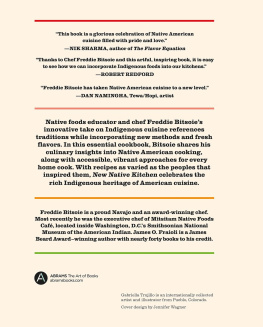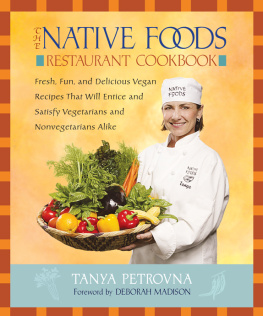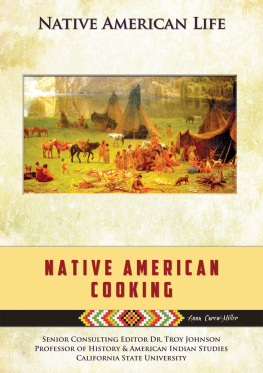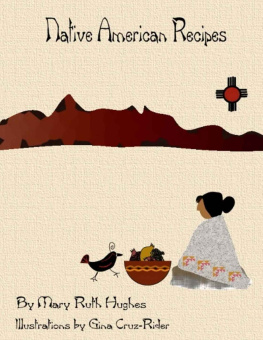Contents
Guide
Page List
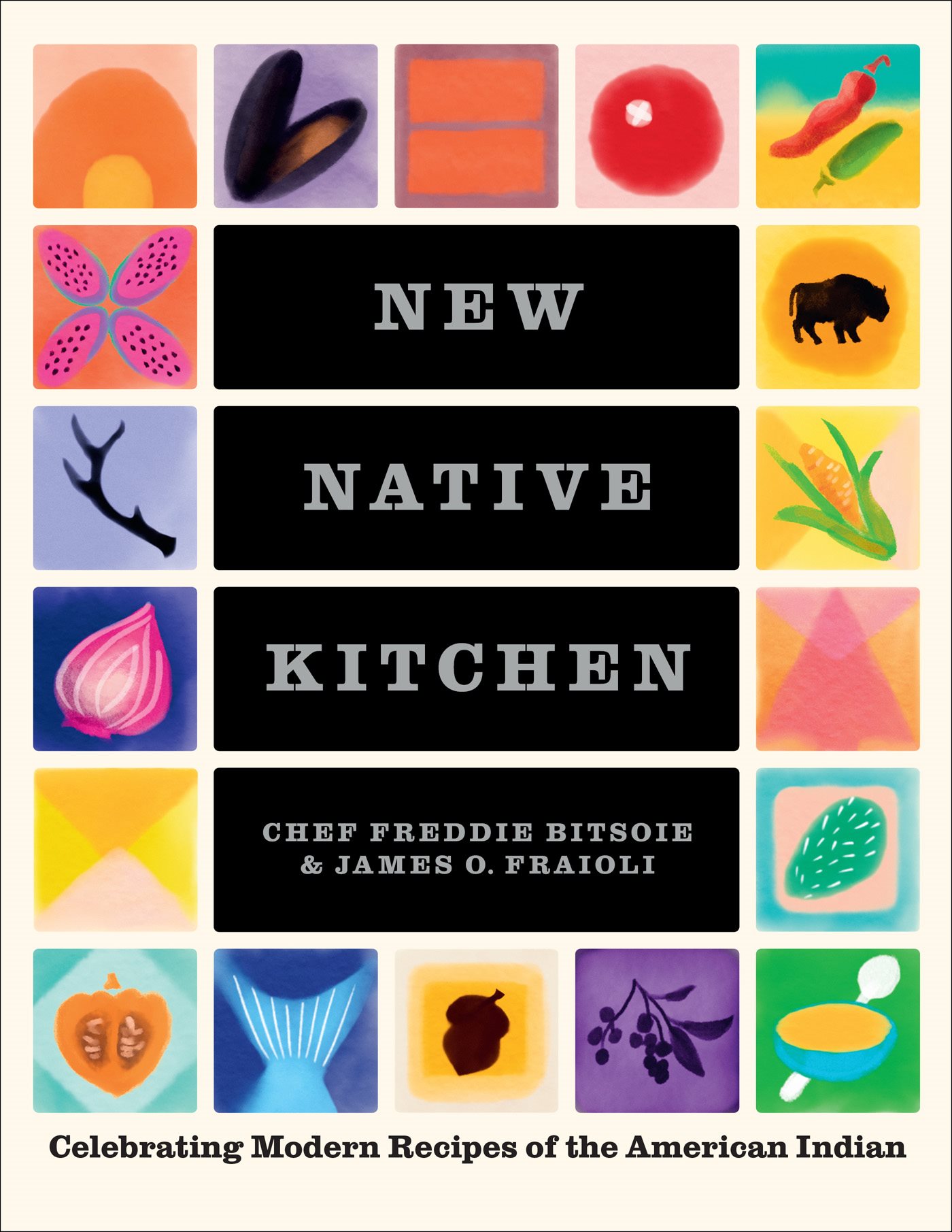


Introduction
I began experimenting in the kitchen when I was a kid. Maybe it was the PBS cooking shows that I loved, or maybe it was boredom that drew me, but I began to cook in secret when my family wasnt looking. I started out with hamburger patties, working through trial and errorlike a culinary detectiveto figure out what tasted best. When my mom couldnt find the chicken that shed placed in the refrigerator one morning, I didnt want to tell her that Id accidentally set it on fire. Eventually I got better at not burning chicken and learned traditional Navajo (Din) cooking techniques from my grandmother, through my travels, and from people I met on the way.
I like to say that I grew up everywhere west of the Sandia Mountains, where I was lucky to learn about the plants, animals, and people of different microclimates across the Mojave and Sonoran Deserts. Whenever my family moved to a new town in Utah, Texas, Arizona, or New Mexico, I learned to adapt; I listened closely to the landscape. From my grandmother, I learned that listening to people and places is just as much a part of storytelling as speaking is, and that storytelling is a revered tradition among Indigenous cultures. So I began to listen for the ways that borders like rivers, mountains, rain shadows, or highways influence popular clothing and hairstyles, language and slang, or the food of a specific region.
As a Navajo of the Tbh Edgewater Clan, born for the Ntoh dine Tchiinii, I loved growing up in the Southwest, where just like my ancestors I breathed in the spicy scent of creosote and petrichor with a sigh of relief each time it rained. To some, the desert might appear barren, dry, and dun-colored. But a closer look reveals that its bursting with ecologies that dramatically change with every few feet of elevation reaching closer to the clouds.
In a region where water is scarce, I saw the resiliency, and yet the delicacy, of plant species like the saguaro cactus. Their shallow root systems stretch through parched soil to catch whatever moisture they can; theyve evolved to thrive in extreme conditions. Blooming brightly, their succulent fruit swells each year despite the summer heat. And so I began to learn that food is the most dynamic way to tell a story. Im grateful to the desert, and to my grandmother, for teaching me how to listen and how to tell the histories of places and people through my cooking.

Fortunately, Ive always enjoyed meeting new people, and that skill helped me fit in whenever I needed to enroll at a new school, make new friends, and learn the culture of a new neighborhood. Later, it continued to help me build long-lasting friendships with members of Native American communities across the continent, many of whom have graciously mentored me and shared their ancestors culinary wisdom.
As a Navajo, it is imperative that I respect the myriad ingredients cultivated by Indigenous stewards of the land, air, and water in what we now call the United States. And as the executive chef at Mitsitam Native Foods Caf in Washington, D.C.s Smithsonian National Museum of the American Indian, I use that awareness to build varied menus that incorporate sacred Indigenous foodways with reverence.
North America is not, and has never been, a monolith. Just like Europe, its an expansive continent thats incredibly diverse in terms of language, geography, culture, and more. But European countries like France and Spain are praised for their food traditions, which are taught in elite culinary schools; Indigenous cuisines, with similarly sourced ingredients and finessed preparations, unfortunately dont get the same attention. My aim is to change that.
The land thats now the United States is a land of many nations and communities, with a multitude of cuisines, architectural styles, spiritual beliefs, and languages that make each region uniquely beautiful. Referring to all Indigenous peoples, or their foods, as one homogenous group is like saying that theres no difference between Spains tapas and Frances hors doeuvres. At Mitsitam Caf, my menus celebrate regional distinctions with thoughtful dishes designed to showcase the rich lakes of the Great Plains, succulent produce of the arid Southwest, lush woodlands of the Northeast, unique botany of the humid South, and teeming bounty of the Pacific Northwest.
With chapters featuring Soups, Salads and Vinaigrettes, Vegetables and Starches, Land and Sea, and Puddings and Sweets, I have worked to make sure dishes are accessible and the recipes easy to follow. Im especially excited to share the Puddings and Sweets section, given the common misconception that in pre-Colombian times, Indigenous diets didnt include desserts. Remember, we have always had agave, maple syrup, and sweet biodiverse produce that early Europeans covetedespecially strawberries and other Native fruits.

Chef Freddie Bitsoie with food historian Twila Casadore in Papago Park in the Sonoran Desert

Saguaro cactus of the Sonoran Desert
As youre making the dishes in this book, consider buying ingredients from Indigenous vendors as much as possible, to help support their important work of preserving ancient culinary knowledge and resources. Most of the recipes call for basic ingredients that will be simple to source, no matter where you shop. However, in the Native American Pantry section (), I describe some less common and harder-to-find ingredients. Remember that grocery shopping can be an adventure if you want it to be. Whether youre ordering dried sumac from an Indigenous vendor through Etsy or buying fresh salmon on a road trip along the Pacific Northwest coast, consider it an opportunity to meet new people and learn new things.
In this book, youll discover that Indigenous foodways are hyperlocal to each region; farm to table for millennia. With deep symbiotic roots, theres an interconnected trust between natural resources and the Indigenous communities who have always cared for the land where they live. Consider the three sisters, for example: the North American Indigenous planting method of sustainably growing squash, corn, and beans. Since the 1970s, people have termed the technique permaculture, but to traditional Indigenous farming practices, its simply a way of respecting the delicate balance of plants and earth, air, water, and fire.
Alongside these regional recipes, youll read about many of the ancient communities whose traditions inspired them. Ive included general background for these Indigenous cultures throughout the book. By no means is the limited material I provided meant to encapsulate each community or their way of life. Its merely a window into a number of Native Americans and First Nations who are connected with this book through food. I hope you will find their interesting histories and the art that inspired them to be a starting point for further reading and understanding.

